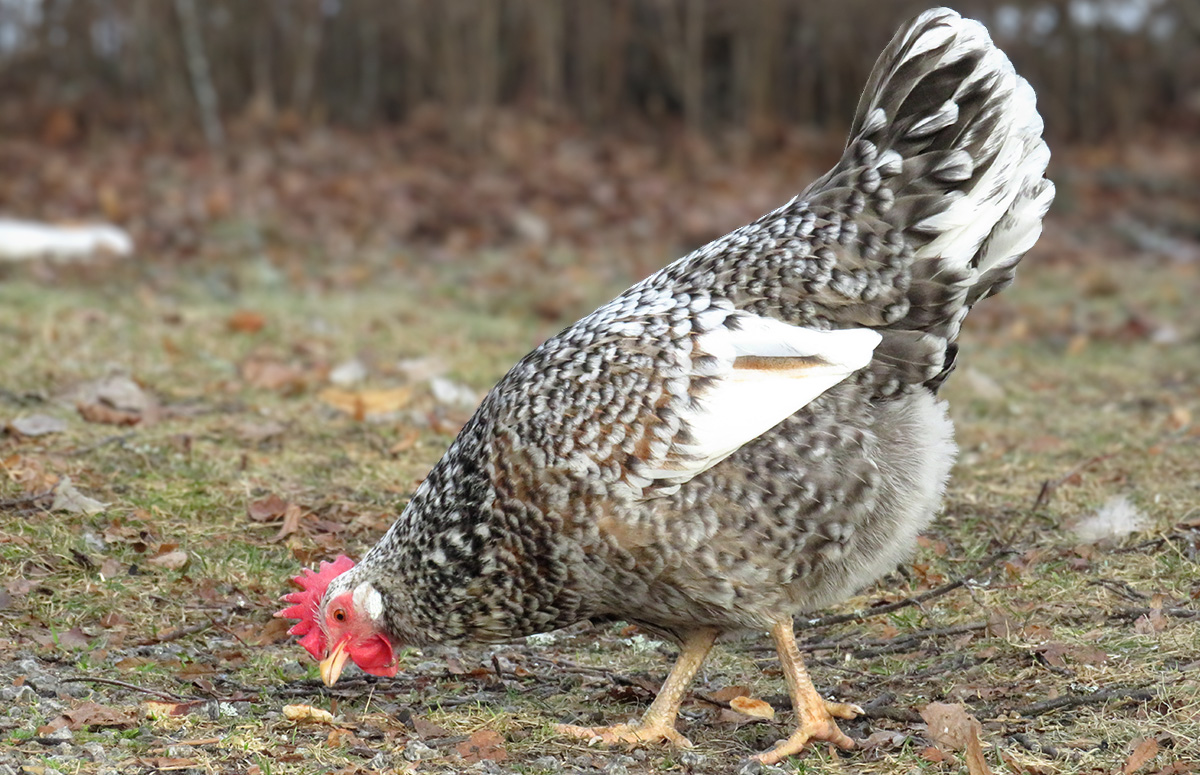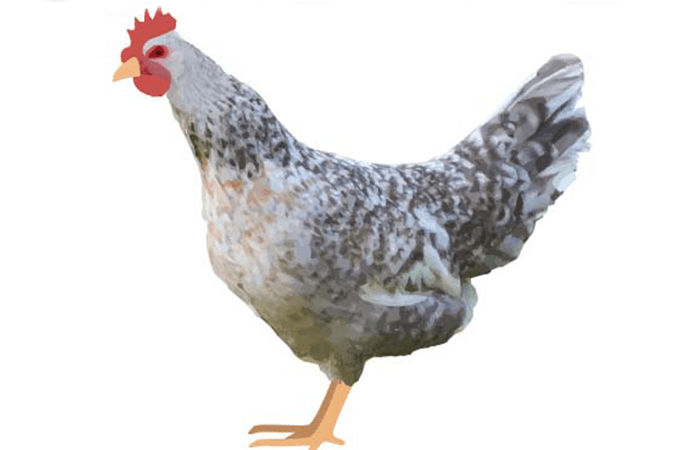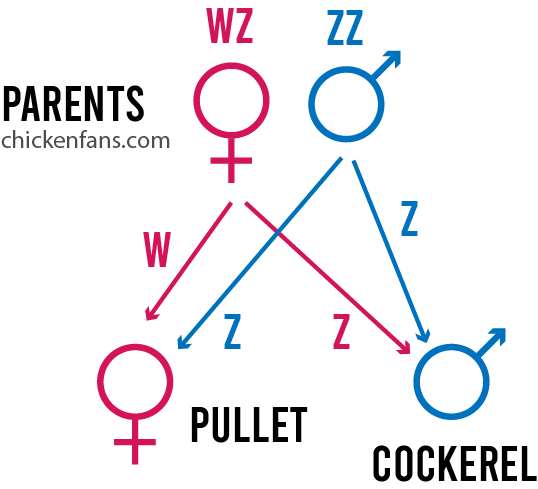55 Flowery & Breeds by Silverudd

In 1955, Martin Silverudd from Sweden created some auto-sexing chicken breeds that gained international fame. The most popular and well-known one is the 55 Flowery, available in hatcheries in the US and Europe.
Let’s have a look at the 55 Flowery and some of the other breeds.
The views of Martin Silverudd
Living in 1955, Silverudd didn’t have all the advanced technology and scientific knowledge we have today. However, he was an experienced breeder at the time.
Some of his breeding goals were to:
- create auto-sexing chicks for high-yielding breeds like the Leghorn
- change roosters regularly and still be able to know the father of the chicks
- to see which hen was the mother of the chicks by looking at the eggshell-color
- to get light breeds such as the Leghorn to lay brown eggs
All very ambitious goals at the time. He had some successes, and some of his breeds and strains still exist today. They are not the most well-known breeds; for some strains, the number of chickens still hopping around is relatively low.
The breeds of Martin Silverudd
The most famous breeds of Martin Silverudd are:
Fifty-five Flowery
The oldest of the breeds was created in 1955. It’s a rather big millefleur-colored chicken based on Leghorns. The gender is easily recognized after hatching as the hens are barred. The 55 Flowery lays large (off-)white eggs. Pullets are similar to a Legbar but mottled, while the roosters are all-white with a few grey streaks. There is also a gold variant, but not all hatcheries have both varieties.

Smaaland Chickens
Smaaland Chickens were created by crossing White Leghorns with Rhode Island Reds and New Hampshires. The birds lay light brown eggs. Just like the 55 Flowery, it’s an autosexing breed, but in some cases, it’s less straightforward to do the sexing of the day-olds.
The roosters are grey, barred, and have a silver neck and saddle. The pullets look like Legbars. The hens are known to go broody, but the inbreeding is known to interfere with hatching, and the success rates might not be what you wish for.
Queen Silvia
Queen Silvia chickens are also a crossing of white Leghorns and Rhode Island Reds. They lay brown, medium-sized eggs. Roosters are white and have some pigment in the wings, saddle, and black tail. Pullets are barred with a white neck. The chicks have a unique look, with some saying they resemble gull chicks. Some hens will go broody and be excellent mothers to their chicks.
Molilja
Molilja chickens are a yellow-brown variant of the white Leghorn but smaller. They lay lightly tinted white eggs. Some pullets have brown or black pigments on their backs. The chicks are yellow and have black spots and lines on their heads. As with Queen Silvia, some hens will go broody and take care of their chicks.
Isbar
The Isbar chickens are derived from the Rhode Island Red. By selective breeding, the birds are now Silver and barred. The black parts in the Rhode Island Red are barred in Isbar chickens. Some hens carry the blue egg gene and will lay green eggs. When crossed with white egg-laying breeds, the offspring will produce blue eggs. The blue egg gene (O) will turn the eggs green when crossed with brown-egg layers.
The Isbar Blue variant has colors ranging from black to blue/grey. An Isbar Blue with a gold neck and saddle is a stunning bird to watch.
55 Flowery
The 55 Flowery is the oldest creation from Martin Silverudd and dates from 1955. Over the years, it has become his most famous creation, with commercial flocks actively breeding the strains. The fifty-five in the name refers to the year 1955, and the Flower refers to the white tips on the birds’ feathers.
The hens look like Legbars but show more white in the feathers as they are mottled. The adult roosters are primarily white, with very few flecks of black in their plumage. They look a lot like white Leghorns at first.
55 Flowery chicks are easily sexed at hatching. The males are blotchy at hatch, and the female chicks look like chipmunk striped Light Brown Leghorn chicks.
As good as it sounds, in 1955, hatcheries did not want autosexing fowl. They did not want their customers to be able to identify their chicks quickly at the hatch to compete with them.
At the time, many autosexing birds like Legbars and Cambars were also derived from show lines that did not represent great egg layers. Therefore most of the birds could not compete with the egg-laying machines available. However, that does not apply to the 55 Flowery chickens, as they are prolific layers.
55 Flowery Eggs
The 55 Flowery hens lay huge white or off-white eggs. They are prolific layers and produce around 200 to 250 eggs per year. They might start a little later than the other pullets but lay very large eggs.
55 Flowery Genetic Profile
The 55 Flowery is based on the Leghorn and had some sex-linked genes to identify the chick’s genders at hatch. Sex-linked genes are genes that are stored on one of the sex chromosomes of a chicken, W or Z.

These genes include:
- Sex-linked Barring (B)
- Sex-linked Silver (S)
- Sex-linked Fast-feathering (k+)
Since males have two Z-chromosomes, they carry two of each of these genes. The hens only take one Z-chromosome and have only one copy of these genes. Since the roosters have double barring and silver, the day-old chicks are much paler at hatch than the females.
On top of the sex-link genes, both the 55 Flowery hens and roosters carry the following characteristic genes:
- Brown Leghorn coloring, like chipmunk stripes (e+)
- Mottling patterns (mo)
Summary
Martin Silverudd created some stunning auto-sexing chicken breeds in the fifties. The most well-known is the 55 Flowery chicken, which is still available in Europe and the US. Most other breeds are variants of the Leghorn and are still bred locally.
To learn more about chicken breeds, check out our ‘Chicken Breeds Page‘ to see every specific breed we address. Or go to our listicle breed summary on ‘The Classroom‘, or, if you’re unsure where to start, take a look at our ‘Chicken Breeds: Ultimate Beginners Guide‘.






















